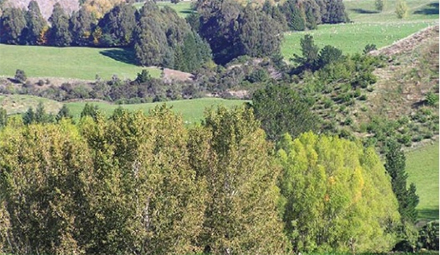With discussion growing around NZ’s afforestation targets and farm conversions to forestry, like many groups, the New Zealand Forest and Wood Sector Forum is advocating for the right tree in right place for the right purpose as the obvious solution. The farm vs forest debate is not a new one, but has certainly been more heated in recent months, with industry commentary from both sectors. Source: Timberbiz
As with many groups, the New Zealand Forest and Wood Sector Forum is advocating for a unified approach, with the right trees, in the right places, for the right purposes as the answer. This means taking a measured approach to the question of land use.
Rather than buying a title and saying it will be solely for one use or another, we need to examine the land under the title, and decide what the best use is for each piece of land. In other words, some hill country farmers would benefit from having some of their land under forest, while some forest land could be better used for food production.
At the margin, each piece of land should be looked at, in terms of its primary/multi-use potential, water resources, environmental considerations, terrain/access and proximity to processing and/or export centres such as mills and ports.
For the forestry sector, this means planting a range of forests for a range of reasons, from permanent forests stabilising land and capturing carbon, to forests for manufacture of high-value products, through to short rotation energy forests.
It may also require conversion of some existing production forestry, either into farmland where the land is better used for food production, or into permanent forest/native forest where the terrain or instability of land makes it unsuitable for productive forestry.
For the farming sector, this could mean incorporating more forestry into existing properties, to improve income from poor land as well as reap the additional benefits forests can provide such as biodiversity and water protection.
Forestry and farming work best in partnership. A positive, collective outcome will deliver the combined financial, environmental and social benefits from sectors.
Central Plateau – Case Study 1
Future Foresters recently visited a 306ha dairy farm in Reporoa, Central Plateau, milking 700 dairy cows and growing trees.
The farmer commented: “Economically, there’s a massive pay off. Not only do we get the trees at the end of it, but we’ve got the shelter, animal welfare is a lot better…not only for storm events, but also during summer we’ve got the shade.
“Basically, from all angles, having trees on farm is benefiting us to no end really. It adds a bit of nicety to the place, it just makes the place feel like it’s a farm and a home, rather than just a business with a boring landscape. It’s a bloody nice place to work really, at the end of the day.”
Northland – Case Study 2
Another current case study is a 160ha property in Northland, which embraced a combination of forestry and farming to improve returns. With a maximum carrying capacity of 1000 stock units, it was insufficient to support a heavily mortgaged family. Dry summers meant this stocking maximum was risky financially and environmentally; so the owner looked at ways to diversify.
Approximately 40ha of small, steep and erosion-prone blocks scattered across the farm, with little grass growth in pasture, were identified as being more suited to plantation forestry than to pastoral farming.
The farmer commented: “We did not expect taking these areas out of the pasture rotation would significantly reduce the carrying capacity of the farm, and in this we were proved right.
“We could see a spread of plantation ages providing a relatively steady income supplement as our off-farm earning capacity declined.
“Planting commenced in 1983, and by 2001, 43ha had been planted and 38ha were in radiata pine. After harvest the mean net return was $35,193/ha translates to more than $1000/ha per annum.”






